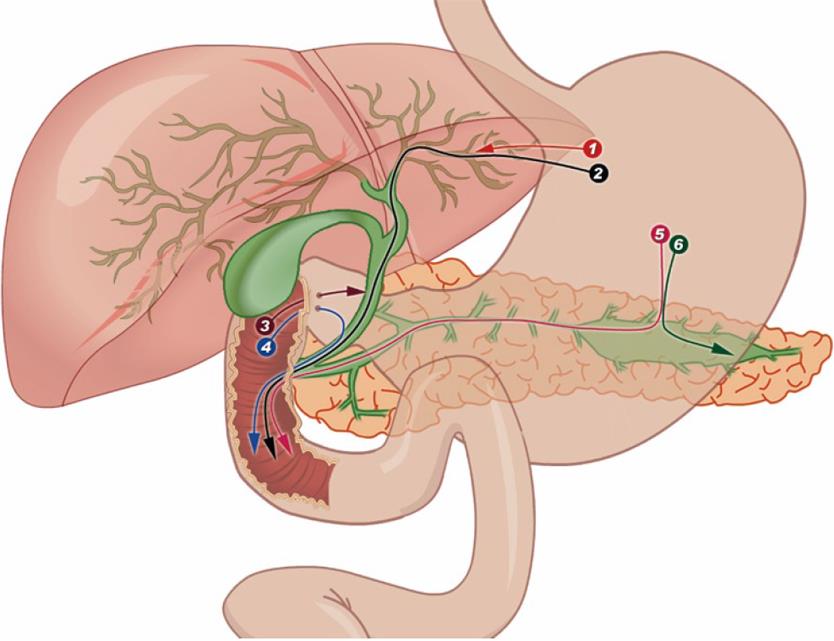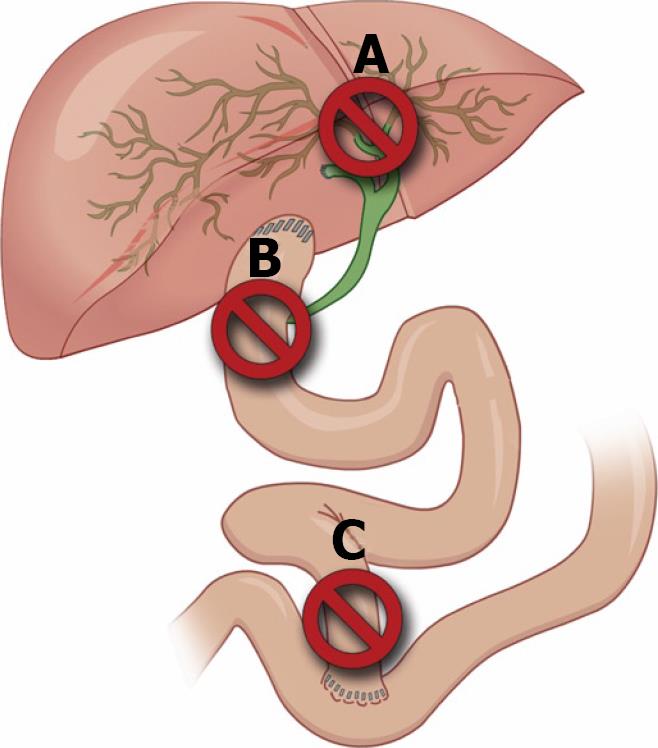Copyright
©2010 Baishideng.
World J Gastrointest Endosc. Jun 16, 2010; 2(6): 212-222
Published online Jun 16, 2010. doi: 10.4253/wjge.v2.i6.212
Published online Jun 16, 2010. doi: 10.4253/wjge.v2.i6.212
Figure 1 The three potential ESCP access routes: intrahepatic (1, 2), extrahepatic (3, 4) and pancreatic (5, 6).
After ductal access through any of them, drainage can be accomplished transmurally over an intraductal guidewire (1, 3, 6) via hepaticogastrostomy (1), choledochoduodenostomy (3) or pancreaticogastrostomy (6). Transpapillary guidewire placement (2, 4, 5) allows both retrograde access via rendezvous ERCP and antegrade stent placement for biliary (2, 4) or pancreatic duct drainage (5). Rendezvous requires an accessible papilla and is preferable in benign disease. Antegrade transpapillary ESCP suits complex postoperative anatomy, particularly when performed for palliation of malignant obstruction.
Figure 2 A hilar stricture with dilatation of the left ductal system (A) requires intrahepatic access.
Extrahepatic access is suitable for distal biliary obstruction in patients with native antroduodenal anatomy despite the presence of ascites or non-dilated intrahepatic ducts (B). Any prior surgery involving distal gastrectomy with gastrojejunostomy (C) precludes EUS imaging of the CBD. Some of these factors are present in 80% of carefully selected ESCP candidates, which limits the issue of “operator’s choice of approach” to 20% of cases.
- Citation: Perez-Miranda M, Serna CL, Diez-Redondo P, Vila JJ. Endosonography-guided cholangiopancreatography as a salvage drainage procedure for obstructed biliary and pancreatic ducts. World J Gastrointest Endosc 2010; 2(6): 212-222
- URL: https://www.wjgnet.com/1948-5190/full/v2/i6/212.htm
- DOI: https://dx.doi.org/10.4253/wjge.v2.i6.212










